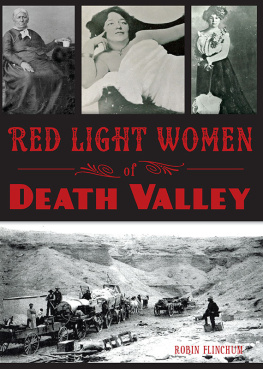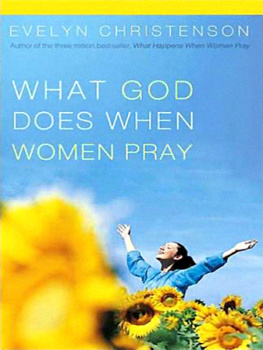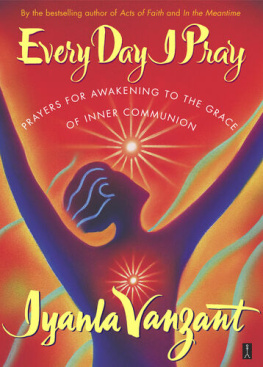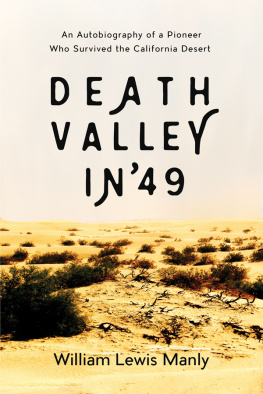

Published by The History Press
Charleston, SC 29403
www.historypress.net
Copyright 2015 by Robin Flinchum
All rights reserved
First published 2015
e-book edition 2015
ISBN 978.1.62585.552.7
Library of Congress Control Number: 2015945067
print edition ISBN 978.1.46711.751.7
Notice: The information in this book is true and complete to the best of our knowledge. It is offered without guarantee on the part of the author or The History Press. The author and The History Press disclaim all liability in connection with the use of this book.
All rights reserved. No part of this book may be reproduced or transmitted in any form whatsoever without prior written permission from the publisher except in the case of brief quotations embodied in critical articles and reviews.
CONTENTS
ACKNOWLEDGEMENTS
Literally hundreds of people all over the country helped me to write this book. Trying to tell the life stories of women who moved around a lot was challenging and required the help of amateur and professional historians and genealogists, private and public archivists, clerks, coroners, librarians, activists, other writers, friends, relatives and assorted well-wishers cheering me on.
Since I have been working on this book a very long time and have lost some of my files along the way, I am bound to forget some of the people and places who contributed to this work. But ultimately every single tiny piece of information helped me to understand and flesh out the stories of these womens lives. Every little nugget uncovered by a librarian on the other side of the country, every brief notation in a dust-covered ledger book, every little mention in a historical newspaperall these things were storytelling gold to me, and I could not have gathered them without a tremendous amount of assistance.
To my friend Judy Palmer, as always, goes a great deal of the credit, for she helped me find the path, not to mention so many of the details. Her work on the Kitty Tubb biography made the telling of that story possible. Thanks also to Mary and Carma Roper and the clerks at the Inyo County Recorders Office; Beth Porter, Jon Klusmire and the seriously intrepid Roberta Harlan of the Eastern California Museum; Alan Metscher and Eva LaRue of the Central Nevada Museum, and especially to Alan for sharing stories and information that would no longer exist without his careful and chivalrous protection; Suzy McCoy of the Beatty Museum and Robert McCracken of the Nye County Town History Project; Susan Sorrells and Mary King of the Shoshone Museum; all the friendly clerks at the Nye County Clerks and Recorders Offices; Kathy Hodges of the Idaho State Historical Society and a fine private researcher; Ken Lenger of Deep Enough Press; Blair Davenport and Greg Cox of the Death Valley National Park Service archives; Guy Rocha and the Nevada State Library and Archives; Phillip Earl and the Nevada State Historical Society; Sally Zanjani, Emmett and Ruth Harder, Cliff Walker and the Mojave River Valley Museum; the Kern County Hall of Records; the Storey County Clerks Office; the Esmeralda County Clerks Office; the Tuolumne County Genealogical Society; the Mahoning County Clerks Office; the Mahoning County Vital Records Office; the Mahoning County Historical Society; the University of NevadaLas Vegas and Reno Special Collections libraries; the Bakersfield Public Library Genealogy Room; Leo Schafer, Steve Green, Joanne Goodwin, Barb Brents, Cecile and Roger Vargo of Explore Historic California, who first introduced me to Lola Travis and took me to the ruins where her rowdy saloon once stood; the late Robert Likes and Mike Patterson of Cerro Gordo; Lola Gillespie Miller and Paul Miller, who made Lola come alive and gave us the gift of seeing her face; Carrie Schikora, who shared precious and delicate family stories about Diamond Tooth Lil; Jacqui Rogers, for whom blood was thicker than pride; Vance Gilliam, David Wright, Barbara Hegne, Robert Palazzo, Jacque Sunstrand and Kari Coughlin, who laid all the groundwork for so much of the Rhyolite work that appears in this book; Shirley Harding; DeeAnn Rossetti; the now defunct but invaluable Death-Valley.us; Pam Burgess of the Ohio Genealogical Society; the San Diego Historical Society; Todd Memorial Chapel in Pomona; Serena Steiner of Calico Ghost Town; the Ballard Historical Society; Judy Tubb, Virginia Goodsen and Nancy Tubb Petersen; Kent Stoddard of the Mono County Historical Society; Terri Geisinger of Bodie; Barbara Hegne; and Ron Miller.
Special thanks to Hiya Swanhuyser for breaking down the dam so the words could flow.
And those are just the people and places whose names I either wrote down or remembered. But there were so many others who helped me find what seem like a thousand other details.
And, as always, Im grateful for the quiet and beauty of my desert home and the love and support of my husband and son and my mother, who cheers me on.
INTRODUCTION
This book was a work in progress for a very long time. Originally, it wasnt going to be about sex workers in particular. It was going to be about all the amazing women who came to Death Valley country in the days before air conditioning, GPS and Wi-Fi and who learned to live in and love this extreme, extraordinary landscape.
I wanted to tell the stories of women who had been overlooked and forgotten. Back then, I had the idea that prostitutes, as a result of their more adventurous lives, had already been given a fair share of the limelight. But somehow, their stories continued to draw my attention. Bit by bit, fact by unexpected fact, I kept learning things about these women that amazed me, and I began to realize that only small parts of their stories had been toldthat prostitutes, as they most often appeared in history, were no more than cardboard cutouts. Some sensational event brought them into the public eye, and they became frozen in that moment in time. The scene then repeated over and over in later histories. But I was discovering that if I looked below the surface of those moments, there were even more amazing stories to be found in the quiet, everyday details of these womens lives.
And while I learned these things retroactively about a group of women I had never met, I was also having a parallel experience in real time with one of the dearest women I have ever known. It was through witnessing, first as an old friend and then as a reporter, her very public arrest for prostitution that I came to have a better understanding of the material I was gathering for this book.

Shannon Williams (19642015) from the media campaign Someone You Know Is a Sex Worker, St. James Infirmary, 2011. Photograph by Barbara DeGenevieve and Rachel Schreiber.
It was in the early 1990s that I first met my friend Shannon Williams. She, five feet, two inches, with an hourglass figure and wearing motorcycle boots, was being clubbed by the police at an anti-war demonstration, and I was covering the event for the college paper. I would write about her and her friends a lot that year, and I would fall in love with them all. They would become my friends, and then they would become my surrogate family.
I would, with a sense of deep responsibility and secret pride, act as Shannons labor coach when she was pregnant with her first child. I remember leaning over the railing of her hospital bed to greet the baby the morning he was born. And more than twenty years later, I would be leaning over the railing of her hospital bed again to kiss her goodbye as an unsuspected brain tumor put out the brilliant light that burned inside her.
Next page









